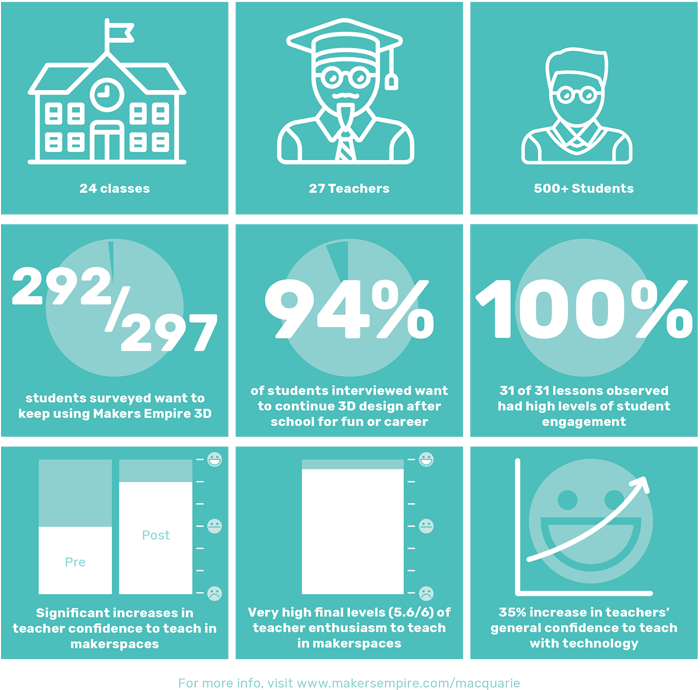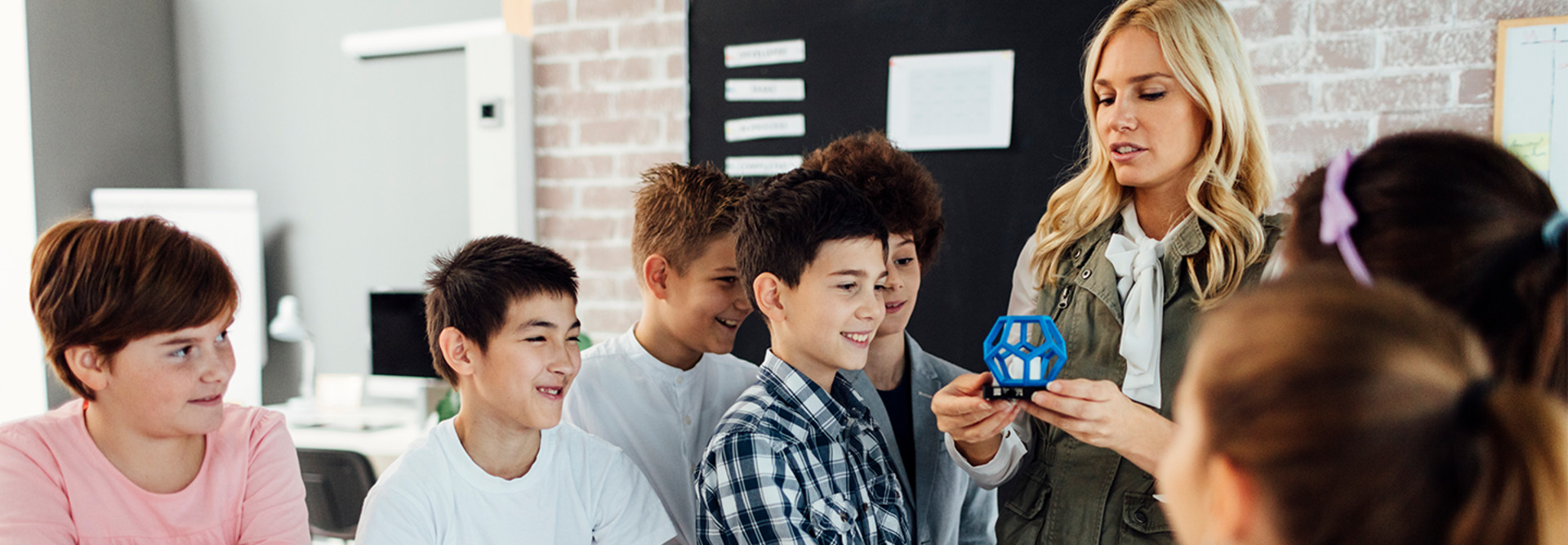3D Printing Highly Effective for Building Creative Skills in K–12 [#Infographic]
New research from Macquarie University’s Department of Educational Studies and education technology company Makers Empire finds 3D printing integration can boost creativity, critical thinking and design skills among primary school students. Researchers involved in the project, which took place between August 2017 to July 2018, saw increased levels of student engagement and educator confidence in the 24 classrooms that used the 3D modeling and printing applications.
“When undertaking makerspace-based activities, students were observed to develop creativity, problem-solving skills, critical thinking, inquiry capabilities, design thinking skills, collaborative skills, autonomy, literacy, numeracy, scientific understanding, technological capabilities, communication skills, reflective learning capabilities and resilience,” according to researchers.
Over the course of the study, classroom curricula saw an increase in creativity (71 percent of lessons), design thinking (64 percent) and critical thinking (58 percent), leading to near 100 percent student engagement.
Teachers involved in the program also saw positive changes as a result of using 3D printers in the classroom, with educators exhibiting improvements in capabilities and comfort in using technology in the classroom.
“Many teachers entered learning partnerships with students, and as a result, students came to see their teachers as models of life-long learning,” the researchers report. “Some teachers related how these changes had transcended beyond their makerspaces modules — for instance, in the form of more inquiry-based, problem-based, and collaborative units of work.”
To showcase these results of incorporating 3D design and printing into a classroom setting, Makers Empire has created an infographic of the study’s findings.
MORE FROM EDTECH: See these 4 steps to create a strong 3D printing program in your K–12 classroom.










